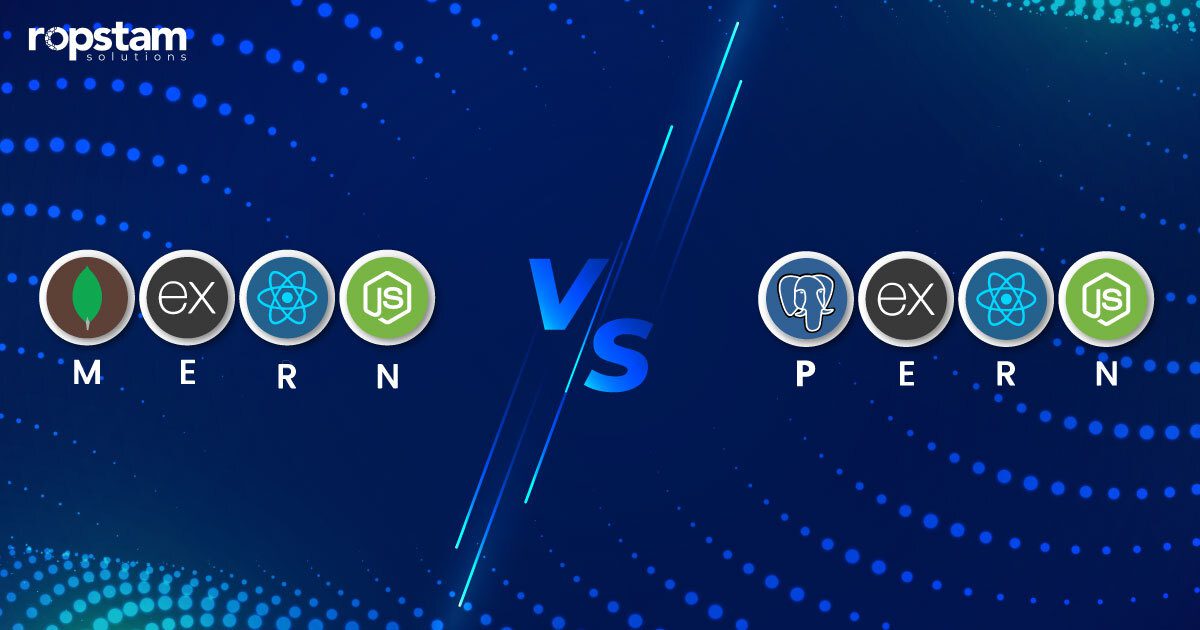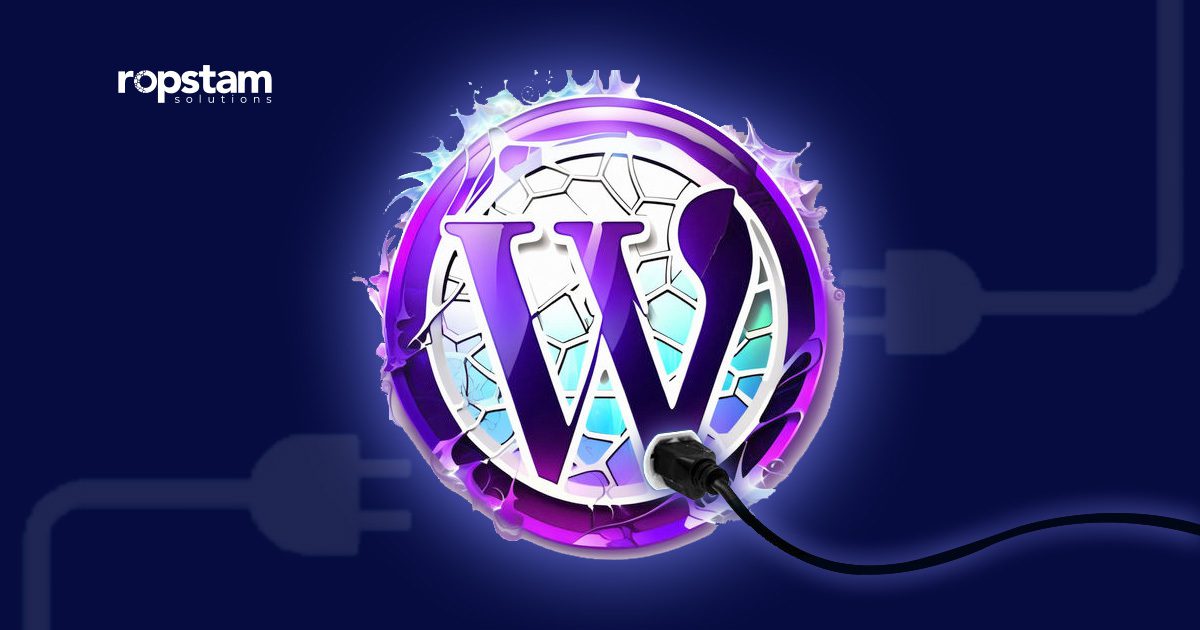If you are a web developer, you must have come across the terminologies MERN and PERN. These are two of the most commonly utilized web stacks for crafting user-friendly web applications from start to finish. Struggling to identify the best web development stack for your next project? Here, I will comprehensively compare MERN vs PERN stacks to help you make an informed decision.
MERN vs PERN – Factor-wise comparison for helping web developers to make right decision
Understanding the differences between MERN and PERN is important for MERN developers and PERN developers. Before moving on to the comparison of the web development stacks, let us go through the basics first.
What is a web development stack?
A web development stack is a combination of software tools and technologies used to build websites and web applications. It typically consists of components covering the database, server, and client-side programming.
For instance, the MERN stack includes MongoDB (database), Express.js (server framework), Reactjs (front-end JavaScript library), and Node.js (server environment).
Another popular web development stack is known as MEVN. These are just some of the many technology stacks available for creating websites or web applications. Such stacks provide a structured approach to development, allowing developers to efficiently create dynamic, feature-rich web experiences by leveraging the strengths of each component.
What is MERN stack?
The MERN stack is a popular web development framework consisting of four key technologies: MongoDB, Express.js, React.js, and Node.js. Mongo DB is a NoSQL database known for its flexibility and scalability. This database is extensively utilized for storing and retrieving massive amounts of data with ease.
Expressjs is a backend web application framework that runs on Nodejs. it enables rapid and efficient server-side development. While arguably not as powerful as Nest.js, Express js is still a very popular backend framework. Moving on, React is a dynamic front-end library that facilitates the creation of interactive UIs. Similarly, Node.js is a JavaScript runtime environment that executes code on the server side.
In harmony, these components enable the development of fast, responsive web applications. The MERN is particularly advantageous for its full-stack JavaScript environment, which optimizes development and simplifies the codebase. This makes the MERN stack a go-to choice for modern web applications like social media platforms, e-commerce sites, and more.
What is PERN stack?
The PERN stack is a cohesive collection of technologies that includes PostgreSQL, Express.js, React, and Node.js, each playing an equally important role in web development.
This stack is is constantly getting more and more popularity because of its CRUD operations. Acting as the main point of difference between MERN and PERN, PostgreSQL is an advanced, open-source relational database that offers reliability and stringent features for data storage and retrieval. It is the database management system (DBMS) in the PERN stack.
Particularly well-suited for applications requiring complex database operations, PERN offers the benefits of structured data management. Its simplistic JavaScript development experience makes it ideal for enterprise-level applications, financial software, and other web services depending on reliable data interactions.
Now as we are done with the basics, let’s extend this debate by digging into the key differences between these two popular stacks:
| Factors | MERN Stack | PERN Stack |
| Speed | Fast development due to JavaScript’s non-blocking I/O 🤝 Draw | Similar speed, with potential for complex queries due to PostgreSQL 🤝 Draw |
| Performance | High with MongoDB’s flexible data handling 🤝 Draw | Robust performance with PostgreSQL’s powerful data processing capabilities 🤝 Draw |
| Community Support | Large, due to the popularity of Node.js and React 🤝 Draw | Equally strong with a significant community around PostgreSQL 🤝 Draw |
| Learning Curve | Moderate; JavaScript-focused with ample resources 🥇 Winner | Slightly steeper due to SQL |
| Security | Solid, with MongoDB’s No SQL injection protection 🤝 Draw | Enhanced security features with PostgreSQL’s role-based access control 🤝 Draw |
| Third-party Libraries | Extensive libraries and middleware due to the Node.js ecosystem 🤝 Draw | Extensive as well, with a wide range of tools for PostgreSQL 🤝 Draw |
| Maintenance | Simplified by using JavaScript throughout the stack 🥇 Winner | Demands more attention to database schema changes |
1. Speed:
The MERN stack is known for its rapid development capabilities, thanks to JavaScript’s asynchronous nature, which enables non-blocking I/O operations. This characteristic is conducive to building fast, scalable applications that can handle multiple processes concurrently.
On the other hand, the PERN stack offers comparable speed, with the added advantage of PostgreSQL’s adeptness at handling complex queries. Its sophisticated query optimizer can lead to performance gains in applications that require intricate database operations.
2. Performance:
MERN Stack’s MongoDB excels in handling unstructured data, making it highly suitable for applications that require real-time data processing and content management, leading to high performance.
Similarly, the PERN Stack, with PostgreSQL, provides powerful data processing capabilities, especially for applications that require complex transactions or analytics, ensuring robust performance. Furthermore, PostgreSQL’s advanced indexing and optimization features can lead to better handling of large datasets and complex queries.
3. Community support:
The MERN stack benefits from a vast community, largely due to the ubiquity of JavaScript and the popularity of its constituent technologies like Node.js and React. This results in extensive resources, tutorials, and forums available for developers.
Meanwhile, the PERN stack also enjoys strong community support, particularly from developers who favor PostgreSQL for its advanced features and reliability. This results in a wealth of knowledge and community-driven solutions.
4. Learning curve:
The MERN stack offers a moderate learning curve, as developers primarily focus on JavaScript and its frameworks. The uniformity of language across the stack streamlines the learning process, with plenty of resources available for each technology.
Conversely, the PERN stack introduces SQL through PostgreSQL, which might present a slightly steeper learning curve due to the necessity to understand relational database concepts and querying.
5. Security:
Introducing security to a website or web application is of extreme pertinence with an ever-increasing number of cyberattacks. With the MERN stack, the security of web apps is bolstered by MongoDB’s built-in protection against NoSQL injection attacks, among other security features. Node.js and Express.js also offer various security modules and best practices to secure web applications.
Similarly, the PERN stack, with PostgreSQL’s sophisticated security mechanisms, such as role-based access control and row-level security, provides an additional layer of security. Consequently, it is difficult to differentiate between MERN and PERN stacks based on the security measures they offer.
6. Third-party libraries:
The MERN stack has access to a wealth of third-party libraries and middleware thanks to the extensive Node.js ecosystem. This enables developers to easily integrate functionality and reduce development time.
Similarly, the PERN stack also benefits from the extensive collection of tools and extensions available for PostgreSQL, as well as numerous Node.js libraries that support backend development. Such an abundance of tools easily accessible ensures that developers have the resources they need to extend and enhance their applications.
7. Maintenance:
Maintenance of the web app demands significant time and effort to ensure no problems are faced by the users. Maintenance in the MERN stack is facile due to the use of JavaScript across both the client and server sides, which simplifies the codebase and reduces context-switching for developers. This can lead to easier maintenance and faster issue resolution.
In contrast, the PERN stack might require slightly more diligence in database maintenance, such as schema migrations and performance tuning, given the structured nature of SQL databases.
Choosing between PERN and MERN – How to select the right web development stack?
Both MERN and PERN have their own strengths and weaknesses, and while they are comparable in most circumstances, drawing a line between them demands analysis of certain factors. Here, I have compiled a list of some critical factors to help you in this decision:
1. Project requirements:
The nature of your project is the primary determinant of which stack to choose. If your application requires real-time data processing and you’re working with a document-oriented database, the MERN stack with MongoDB might be the better fit. Its schema-less nature allows for flexibility in modifying the data model without significant migrations.
Conversely, if your project involves complex transactions, requires relational data modeling, or must adhere to strict ACID compliance, the PERN stack’s PostgreSQL database offers advanced features that could be beneficial.
2. Team expertise:
Consider the existing skills of your development team. If your team is proficient in JavaScript and prefers to work within a single-language ecosystem, the MERN stack provides a JavaScript-centric development experience.
If your team, however, has experience with relational databases and SQL, or if the project requires those skills, the PERN stack could leverage the team’s strengths more effectively.
3. Scalability:
Both stacks offer scalability to a certain extent but in contrasting ways. The MERN stack, with MongoDB, is well-suited for horizontal scaling and can handle large amounts of unstructured data. This makes it ideal for applications that anticipate rapid growth or fluctuating data requirements.
In contrast, the PERN stack is typically vertically scalable, with PostgreSQL’s performance optimization capabilities, making it suitable for applications that may require complex queries to scale.
4. Community and ecosystem:
The MERN stack boasts a large community with abundant resources, which can be a significant advantage for troubleshooting and learning. The PERN stack also has strong community support, particularly around PostgreSQL, but it may have fewer resources than MongoDB for certain aspects.
Before making the final decision, consider the availability of libraries, tools, and community support for the specific features you need.
5. Cost and resources:
Lastly, cost implications should not be overlooked at any cost because the choice of a stack is directly related to the overall budget allocated to a project. Both stacks are open-source and free to use, but the total cost of ownership includes factors like hosting, development time, and long-term maintenance.
Therefore, you must analyze the cost-effectiveness of each stack in relation to your project’s budget and resource allocation.
Choose Ropstam Solutions for your next web development project
When it comes to the MERN vs PERN debate, there is no silver bullet that solves all problems. Depending upon the scope of the project, budget allocation, and expertise of your development team, you should stick with either MERN or PERN after a comprehensive analysis.
The selection of a well-versed team goes a long way in the success of a website or web application project. At Ropstam Solutions, we have a team of skilled MERN Stack developers ready to take on any challenge. If you are looking for qualified web app developers for your projects, stop searching and reach out to us today via email info@ropstam.com or call us at +1 (866) 631-8767.














